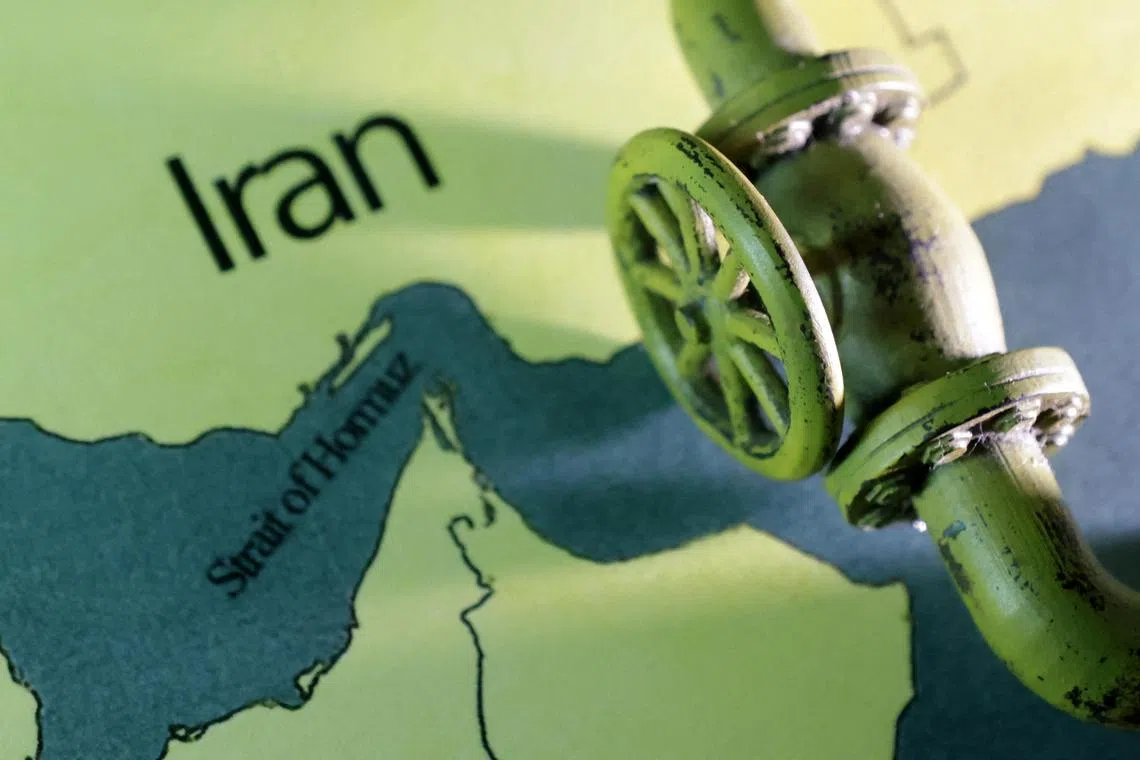Oil prices plunge as Trump announces ceasefire in the Middle East
Sign up now: Get ST's newsletters delivered to your inbox

The plunge – which followed a roller-coaster session on June 23 – took crude prices to well below their level on June 12, the day before Israel attacked Iran.
PHOTO: REUTERS
Follow topic:
Follow our live coverage here.
SINGAPORE – Oil prices fell sharply on June 24 as US President Donald Trump said a ceasefire had been agreed on between Iran and Israel,
Brent crude futures were down 3.6 per cent at US$67.97 at 5.03pm Singapore time, after earlier tumbling as much as 5.6 per cent to below its close on June 12 before Israel’s first strike on Iran. US West Texas Intermediate crude was down 3.7 per cent at US$65.98.
The plunge followed a roller-coaster session for oil on June 23
Mr Trump announced on June 23 that Israel and Iran fully agreed to a ceasefire, adding that Iran would begin the ceasefire immediately, followed by Israel after 12 hours. If both sides maintained peace, the war would officially end after 24 hours, concluding a 12-day conflict.
“If the ceasefire is followed as announced, investors might expect the return to normalcy in oil,” said Ms Priyanka Sachdeva, senior market analyst at Phillip Nova.
“Moving forward, the extent to which Israel and Iran adhere to the recently announced ceasefire conditions will play a significant role in determining oil prices,” Ms Sachdeva said.
Mr Trump said that a “complete and total” ceasefire would go into force with a view to ending the conflict between the two nations.
IG analyst Tony Sycamore said: “With the ceasefire news, we are now seeing a continuation of the risk premium built into crude oil price last week all but evaporate.”
Iran is the Organisation of Petroleum Exporting Countries’ (Opec) third-largest crude producer, and the easing of tensions would allow it to export more oil and prevent supply disruptions, a major factor in oil prices jumping in recent days.
The direct US involvement in the war had also focused investors squarely on the Strait of Hormuz, a narrow and vital waterway between Iran and Oman in the Mideast Gulf through which between 18 million and 19 million barrels per day of crude oil and fuels flow, nearly a fifth of the world’s consumption.
Concerns were growing that any disruption to maritime activity through the strait would catapult prices, possibly into three-digit territory.
But the tentative ceasefire in the Middle East – if it takes effect and lasts – may pull traders’ main focus back to the crude market’s underlying fundamentals.
There are widespread expectations that oil supplies will run ahead of demand in the second half of 2025, spurring a build-up in global stockpiles.
The Opec+ alliance, which consists of the Organisation of Petroleum Exporting Countries and non-Opec oil-producing countries, has been reactivating idled capacity at a rapid pace in a bid to recapture market share. Further increases in collective supplies are expected in the months to come.
Mr Trump has made plain that he favours cheaper energy in a bid to buttress his economic agenda as he pushes on with his aggressive trade policy.
On June 23, he demanded that energy producers push down crude prices following US military strikes on Iran, while also urging the US Energy Department to boost drilling.
Lower oil prices may help to quell global inflationary pressures, easing the challenge facing central bankers and potentially aiding the case for interest rate reductions.
In recent days, US Federal Reserve governor Christopher Waller and vice-chair for supervision Michelle Bowman have said they could support a cut in July

